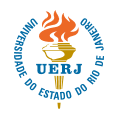Coordinator: Profº Bruno Werneck Mintz
Description: All processes in nature are described through four fundamental forces. One of them, the strong interaction, is the theme of this research project and describes the interaction within the atomic nucleus, among the fundamental constituents of all known matter. Quantum chromodynamics is the theory that describes such a force in terms of subatomic particles called quarks and gluons. At the frontier of physics there are several questions related to strong interaction: how was the universe fractions of a second after the big bang? What happens inside ultra-compact stars? And why do we observe tens of particles composed of quarks and gluons, such as the proton and the neutron, but never did we detect these fundamental blocks directly? The theoretical development proposed in this project has exactly the objective of contributing to answer such questions and thus to understand the most fundamental composition of known matter. This project consists of a set of theoretical efforts to understand how strong interactions manifest themselves in different contexts in which the fundamental theory, quantum chromodynamics, presents strong coupling and the standard perturbative approximation is not applicable. One of the objectives is the investigation of what happens to this interaction at low energies, with the study of theoretical models for the description of the confinement of quarks and gluons within the hadrons, such as protons and neutrons. Proposals aiming at an appropriate quantization scheme for non-abelian gauge theories in this low energy regime, with an appropriate treatment of gauge redundancy, are an essential part of this project. Such theories and their applications are central research objects in this project. Another complementary issue that is also addressed is the study of extremes conditions, which could lead to the confinement of quarks and gluons. SUCH PARTNERSHIPS INVOLVE THE COUNTRIES OF CHILE, URUGUAY, FRANCE, VIETNAM, BELGIUM, GERMANY, ITALY, through agreements with the following institutions: HEIDELBERG UNIVERSITAET, CEC-VALDIVIA, UNIVERSIDAD DE LA REPUBLICA, CEA-SACLAY, UNIVERSITÉ PARIS 7, ÉCOLE POLYTECHNIQUE, SORBONNE UNIVERSITÉ, DUY TAN UNIVERSITY, UNIVERSITY OF LEUVEN - KORTRIJK, HEIDELBERG UNIVERSITAET, GOETHE UNIVERSITAET FRANKFURT, HEIDELBERG UNIVERSITAET and INFN Torino.
https://sites.google.com/view/programa-capes-print-uerj/




